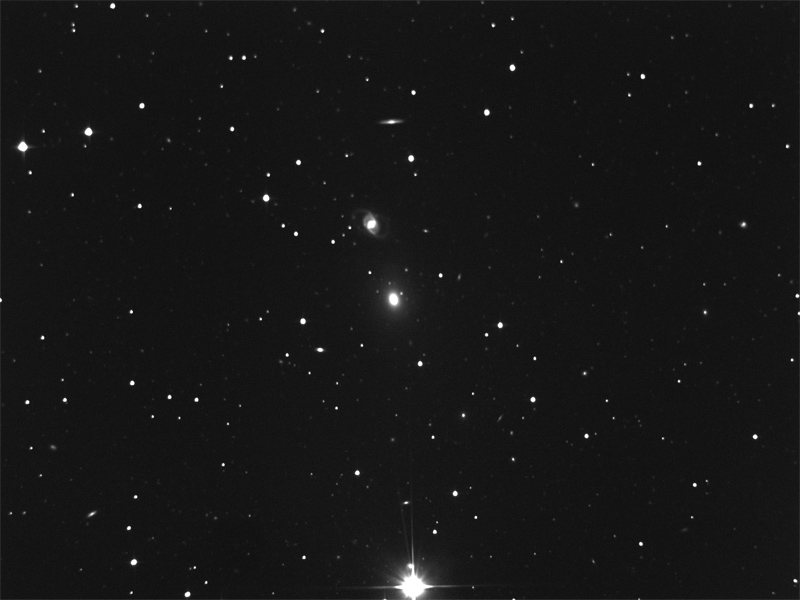
NGC623 and NGC619 Galaxies in Sculptor
| DATE | 17 Oct 2014 |
| TELESCOPE OPTICS | 508 mm mirror f.4 ccd
Kodak KAF8300
3326 x 2504px 5.4 x 5.4µm |
| EXPOSURE | binning 1: composite image, 20 min |
| IMAGE SIZE (ARCMIN) | 30 |
| LIGHT TRAVEL TIME (Derived Redshift. Millions Light Years) | NGC623 = 383 NGC619 = 364 2MASX J01351038-3642487 = 1139 2MASX J01351177-3626147 = 366 GALEXASC J013555.04-362718.3 = 402 ESO 353- G 019 = 368 |
| MAGNITUDE | NGC623 = 13.88 NGC619 = 14.23 2MASX J01351038-3642487 = 16.72 2MASX J01351177-3626147 = 14.1I GALEXASC J013555.04-362718.3 = 16.28 ESO 353- G 019 = 15.87 |
| POSITION RA-DEC J2000 | NGC623 = 01:35:06.40 -36:29:25.0 NGC619 = 01:34:51.80 -36:29:22.0 2MASX J01351038-3642487 = 01 35 10.4 -36 42 49 2MASX J01351177-3626147 = 01 35 11.7 -36 26 15 GALEXASC J013555.04-362718.3 = 01 35 55.0 -36 27 20 ESO 353- G 019 = 01 34 34.4 -36 31 07 |
| POSITION ANGLE: | 254 |
| Rotation Velocity km/s | NGC623 = na NGC619 = na |
| Size (Light Years) | NGC623 = 746,000 (ESO-LV "Quick Blue" IIa-O) but 222,600 using (K_s (2MASS "total")) NGC619 = 216,700 (ESO-LV "Quick Blue" IIa-O) |
| DETAILS | NGC623 is classed as an elliptical galaxy while NGC619 is a ringed barred spiral, although unusual since it's arms seem to form a figure 8. The two galaxies are at roughly the same distance from us and appearing to be the same size. This suggests that there is an anomaly in the ESO-LV "Quick Blue" IIa-O measurement of NGC623. |